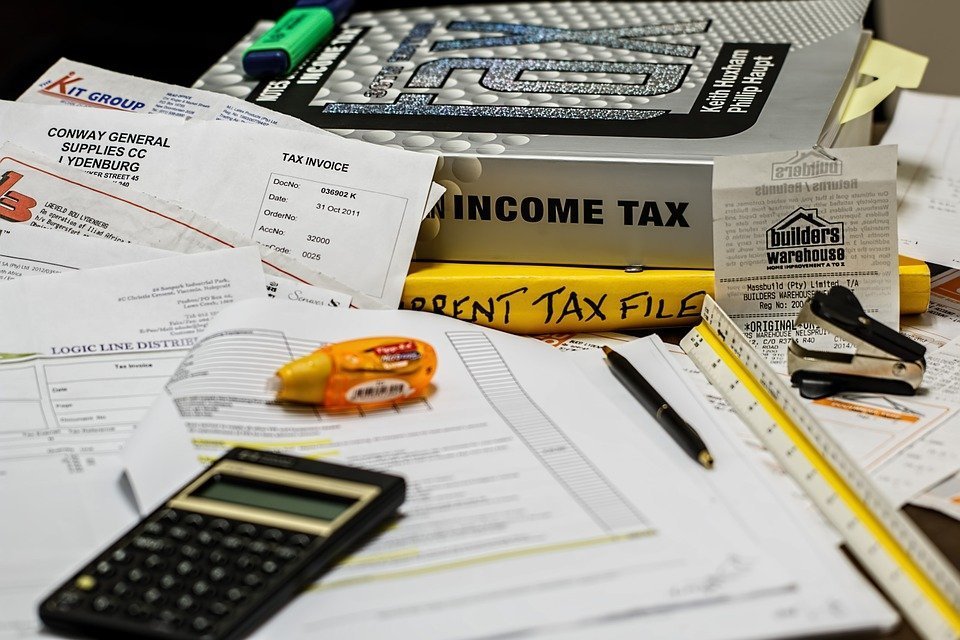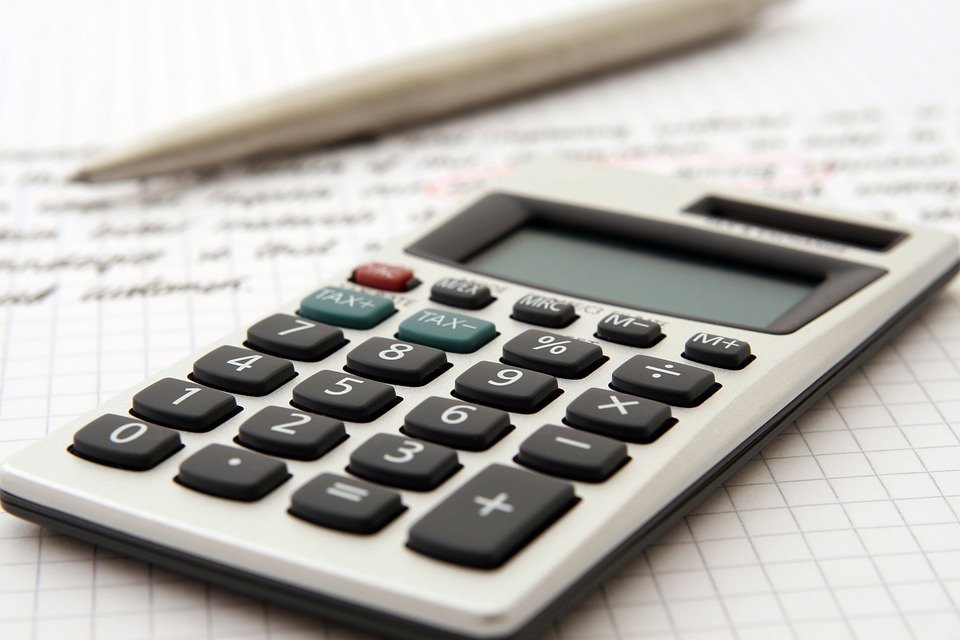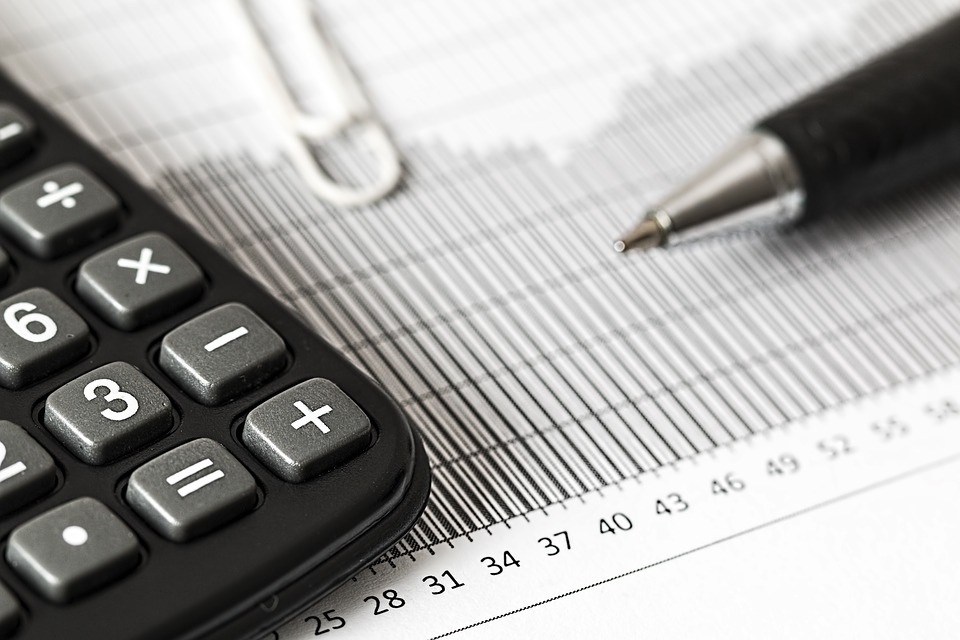
What Is Debt Ratio in Accounting?

Debt ratio is a frequently overlooked financial metric. When running a business, you’ll probably focus on your net revenue simply because this reveals the total amount of profits your business earns in a given period. While important, however, there are other financial metrics you should track, including debt ratio. So, what is debt ratio in accounting, and how do you calculate your business’s debt ratio?
Debt Ratio Explained
Debt ratio refers to the difference between your business’s total liabilities and its total debt. To calculate debt ratio, take your business’s total liabilities and divide it by its total assets, at which point you’ll have your business’s debt ratio.
Here’s an example of how to calculate debt ratio: Let’s say your business has $500,000 in total assets and $250,000 in total liabilities. Take $250,000 and divide it by $500,000. This equals a debt ratio of 0.5. Any debt ratio below 1 is good because it means that your business’s total assets are greater than its total liabilities. If your business’s debt ratio is higher than 1, it means the cost of your liabilities is greater than the value of your assets.
Assets vs Liabilities:
To calculate debt ratio, you’ll need to add up all your business’s assets as well as its liabilities. Assets, of course, are something of value that provides economic benefit for your business. In comparison, liabilities include debt that your business is required to pay.
Assets may include your business’s cash, equipment, vehicles, office furniture and stock shares. Liabilities may include accounts payable, salaries payable, interest payable, income taxes payable and customer deposits. For effective debt ratio tracking, you must calculate all your business’s liabilities and divide it by all your business’s assets.
The Importance of Tracking Debt Ratio
Tracking your business’s debt ratio is important for several reasons. For starters, it provides a better understanding of your business’s cash flow. A high debt ratio will restrict your business’s cash flow, which could hinder your operations and prevent your business from growing and expanding into new markets. Your business’s debt ratio can also affect its a eligibility for funding. If you are seeking a loan to fund your business, lenders may scrutinize your debt ratio to determine if you are a suitable candidate. While private lenders are always an option, many banks will reject your application for a loan if your business has a high debt ratio.
Have anything else that you’d like to add? Let us know in the comments section below!

Accrual vs Cash Basis Accounting: What’s the Difference?

Accounting is an essential step to running a business. Regardless of industry, all businesses need to keep track of their expenses and revenue so that they can optimize their operations for higher profits and pay the correct amount of taxes. But there are different types of accounting from which business owners can choose, the two most common of which include accrual and cash basis.
How Cash Basis Accounting Works
With cash basis accounting, a business records revenue from the sale of a service or product when it receives payment from the customer. Whether the customer pays using cash, credit card, debit card or check, the business doesn’t record the payment as revenue until it has received the funds from the customer. Some basis exclusively use cash basis accounting. Retail stores, for example, typically use this method because they exchange products for money at the same time.
Cash basis accounting offers certain benefits, such as simplicity. It’s easy for businesses to record revenue when they receive payment from the customer. Furthermore, there’s no need to worry about accounts receivables affecting a business’s books. With cash basis accounting, accounts receivables — unpaid invoices — aren’t recorded as revenue.
How Accrual Accounting Works
Accrual accounting takes a different approach. Rather than recording revenue when a business receives payment from a customer, accrual accounting requires businesses to record revenue when a customer makes a purchase. This may sound confusing, but think of it like this: Purchasing and paying for a product or service are two separate things. You can purchase dinner at a restaurant, for example, and you won’t be required to pay for it until after your meal.
Many businesses allow customers to pay for their products or services after purchasing them. With accrual accounting, businesses record revenue when a customer makes a purchase. Customers may pay for their product or service when they initially purchase them. In other cases, customers may wait and pay at a later date, assuming it’s allowed by the business. Accrual accounting ignores the reception of payment from a customer. Instead, it revolves around recording revenue when a customer purchases or orders a product or service
Accrual accounting is the preferred method among business owners, primarily because it views accounts receivables as assets — which they are. On the other hand, however, it isn’t an effective accounting method for measuring a business’s cash flow.
What are your thoughts on accrual and cash basis accounting? Let us know in the comments section below!

What Is Current Ratio in Accounting?
 Financial accounting is an important task associated with running a business. If you don’t know how much money you spend and how much you generate, you won’t be able to optimize your business’s operations, resulting in lower profits. But there are a number of metrics used to measure a business’s financial health, one of which is current ratio. As a business owner, you should familiarize yourself with current ratio so that you can effectively use this metric in your financial accounting efforts.
Financial accounting is an important task associated with running a business. If you don’t know how much money you spend and how much you generate, you won’t be able to optimize your business’s operations, resulting in lower profits. But there are a number of metrics used to measure a business’s financial health, one of which is current ratio. As a business owner, you should familiarize yourself with current ratio so that you can effectively use this metric in your financial accounting efforts.
Current Ratio Explained
Current ratio is a financial metric used to determine if a business has the adequate amount of money and resources needed to cover its short-term expenses. It’s calculated by taking a business’s current assets and dividing it by the business’s current liabilities. If your business has $500,000 in current assets and $300,000 in current liabilities, its current ratio would be 1.66.
A current ratio above 1.0 indicates that your business’s assets are worth more than the cost of its liabilities. Of course, that’s a good thing. If your business’s liabilities are higher than its assets, your business may spend more money than what it earns. In this regard, current ratio is primarily used to measure a business’s liquidity.
Current Ratio Vs Quick Ratio
Current ratio is often confused with quick ratio. Both of these financial metrics reveal a business’s liquidity by comparing its assets with its liabilities. However, that doesn’t necessarily mean they are the same. The difference between current ratio and quick ratio is that the former takes into account all assets, whereas the latter only takes into account highly liquid assets that can be easily converted to cash in a short period of time. Examples of assets used in the quick ratio formula include cash and accounts receivables.
How to Improve Your Business’s Current Ratio
There are several steps you can take to improve your business’s current ratio. First, try to keep your liabilities to a minimum. In other words, avoid taking out loans or using credit cards to fund your business. Second, work to increase your business’s current assets. With more assets, you’ll achieve a higher current ratio. There are countless ways to increase assets, such as exploring new markets or releasing new products or services. With a little work, you can improve your business’s current ratio, allowing for greater liquidity.
Have anything else that you’d like to add? Let us know in the comments section below!

The 5 Primary Types of Adjusting Journal Entries in Accounting
 Creating adjusting journal entries is an important step in accrual accounting. They are called “adjusting” journal entries because they are made before you generate your actual financial reports, thereby giving you a better understanding of your business’s true financial health. In this blog post, we’re going to cover the five most common types of adjusting journal entries and what they mean.
Creating adjusting journal entries is an important step in accrual accounting. They are called “adjusting” journal entries because they are made before you generate your actual financial reports, thereby giving you a better understanding of your business’s true financial health. In this blog post, we’re going to cover the five most common types of adjusting journal entries and what they mean.
#1) Deferred Expenses
Deferred expenses are business-related expenses that you’ve already paid for but haven’t received. Whether it’s a product or service, if you pay for something related to your business’s operations and haven’t received it yet, it’s classified as a deferred expense, in which case it should be added as an adjusting journal entry.
#2) Accrued Expenses
Another common type of adjusting journal entry is accrued expenses. While deferred expenses refer to products and services that you’ve already paid for and haven’t received, accrued expenses are the opposite: they are expenses that you haven’t paid for but plan to. If you have a business loan, for example, an upcoming interest payment on the loan is an accrued expense.
#3) Deferred Revenue
There’s also deferred revenue, which is income generated by your business that you haven’t yet fulfilled. If a customer pays for a product or service in advance, you may record this payment as deferred revenue until you deliver the product or complete the service. Once you’ve fulfilled your obligation — either by delivering the product or completing the service — it’s no longer considered deferred revenue.
#4) Non-Cash Transactions
Non-cash transactions are financial transactions made by your business that don’t have any impact on your business’s cash. Some business owners non-cash transactions are simply transactions made using credit cards, debit cards or checks, but this isn’t true. They are actually financial transactions, such as equipment depreciation, that don’t affect your business’s cash.
#5) Accrued Revenue
Finally, accrued revenue is any income that your business has earned but haven’t received payment for. It’s not uncommon for businesses to allow their customers to pay after the product has been delivered or service has been completed. The business sends the customer an invoice, indicating how much he or she must pay and by when. Until the customer pays this invoice, however, the transaction should be recorded as an accrued revenue adjusting journal entry.
Have anything else you’d like to add? Let us know in the comments section below!

What Is Bad Debt in Business Accounting?
 In business accounting, bad debt refers to unpaid customer or client invoices that you don’t expect to collect. It’s not uncommon for businesses to allow customers or clients to pay after their product or service has been delivered. This is particularly true when speaking about business-to-business (B2B) companies. If you sell a B2B product or service, you may send customers an invoice after delivering the product or service. Most customers will pay this invoice in a timely manner. There are times, however, when a customer may fail to pay his or her invoice.
In business accounting, bad debt refers to unpaid customer or client invoices that you don’t expect to collect. It’s not uncommon for businesses to allow customers or clients to pay after their product or service has been delivered. This is particularly true when speaking about business-to-business (B2B) companies. If you sell a B2B product or service, you may send customers an invoice after delivering the product or service. Most customers will pay this invoice in a timely manner. There are times, however, when a customer may fail to pay his or her invoice.
When a customer doesn’t pay his or her invoice, you should continue to pursue them in an attempt to collect the debt. Maybe the customer forgot about the invoice, or perhaps he or she is experiencing financial hardship. With a little persistence, you can often collect these outstanding invoices and earn the revenue to which you are entitled.
Unfortunately, though, some customers will never pay their outstanding invoices. If an invoice is several months past due and the customer has expressed no desire to pay it, you should consider writing off the invoice as bad debt. Doing so ensures that the invoice isn’t counted as income, which would otherwise increase your tax liabilities and, subsequently, hurt your business’s profits.
If you use the Quickbooks accounting software, you can easily write off bad debt such as this. To begin, log in to your Quickbooks account and create a new account by clicking Lists > Chart of Accounts > New > Expense > Continue. From here, you can assign the customer’s account number to to the new account and enter a name (e.g. Bad Debt). When finished, click “Save & Close.”
After creating the account, you must record the customer’s bad debt. This is done by accessing Customers > Receive Payments > select the customer’s name. Next, click the line item, followed by “Discounts & Credits.” You should then click the “Discount Account” drop-down menu and choose “Discounts,” after which you can select the bad debt account that you recently created. Once this account opens, enter the amount of the bad debt (the amount that the customer hasn’t paid and still owes), followed by “Done” and “Save & Close.”
It’s frustrating when a customer doesn’t pay his or her invoice. And while writing it off as bad debt won’t change this fact, it will prevent the unpaid invoice from hurting your business’s books.
Have anything else you’d like to add? Let us know in the comments section below!

What Is a Trial Balance in Business Accounting?
 Still trying to understand the concept of trial balances in business accounting? This report provides insight into the accuracy of your busines’s financial records. Therefore, it’s important for business owners and professional accounts to create a trial balance report on a regular basis.
Still trying to understand the concept of trial balances in business accounting? This report provides insight into the accuracy of your busines’s financial records. Therefore, it’s important for business owners and professional accounts to create a trial balance report on a regular basis.
Trial Balance: The Basics
The primary purpose of a trial balance is to show that the value of all debit balances equals the value of all credit balances. If the debit column in your business’s trial balance reports shows a higher or lower value than the credit column, it indicates an error in the ledger accounts, in which case you must identify and correct it before creating a profit and loss statement. Trial balances are most commonly used for double-entry accounting, which involves giving every transaction two or more accounts.
Basically, a trial balance is a worksheet or report that contains the value of all ledgers, which are separated into debit and credit columns. Most businesses create trial balances at the end of a reporting period. However, there’s no specific rule stating that you must create a trial balance report at a certain time. Some businesses ignore them altogether. In doing so, however, they place their business at risk for accounting errors.
How to Generate Trial Balance Report in Quickbooks
You can easily create a trial balance report using the Quickbooks accounting software in just a few simple steps. Assuming you use Quickbooks Desktop, log in to your account and access Reports > Accounts & Taxes > Trial Balance. Quickbooks will then show you a report containing two columns: a debit and credit column. At the bottom of these columns are the totals for the respective transactions. These two columns should be exactly the same. If one column contains a different amount than the other, you should go back over the transactions to identify and correct the erroneous entry.
You can also run a trial balance report using Quickbooks Online — the cloud-based version of Intuit’s popular accounting software. From the dashboard, click the “Tax” column, hover over the client for whom you wish to run the report and click “Start Review.” Next, click the pencil-shaped icon next to “Tax Year.” This will bring up a new screen with information pertaining to your chart of accounts. If you need help running a trial balance report, contact your Quickbooks vendor for assistance.
Have anything else you’d like to add? Let us know in the comments section below!

What is a Worksheet in Accounting?
 In accounting, a worksheet is a document containing a myriad of financial information about a business for a specific period or cycle. Typically created in spreadsheet format, it provides a detailed analysis of the business’s financial transactions. Normally, an accounting worksheet will contain the following information.
In accounting, a worksheet is a document containing a myriad of financial information about a business for a specific period or cycle. Typically created in spreadsheet format, it provides a detailed analysis of the business’s financial transactions. Normally, an accounting worksheet will contain the following information.
Income Statement
The income statement is a part of the accounting worksheet that features revenue and expense balances. Also known as a profit and loss account, it shows the business’s expenses for the period.
Trial Balance
Another component of an accounting worksheet is trial balance. This component reveals the business’s assets, liabilities, revenue and expenses for the period. Normally, the trial balance section will list all accounts with a debit under the same column and all accounts with a credit under a different column.
Balance Sheet
Of course, you’ll also find a balance sheet section in an accounting worksheet. As you may already know, the balance sheet contains information about the business’s assets, liabilities and capital account balances. When creating a balance sheet, you should check to make sure the total of the debit and credit columns equals the balance.
Chart of Accounts
The chart of accounts section of an accounting worksheet features a list of all accounts the business has. More specifically, it breaks down this information into several subsections, including assets, liabilities, equity, revenue and expenses.
Adjusting Entries
The adjusting entries section, as the name suggests, reveals all adjustments the business had made to its financial entries. Adjusting entries are made at the end of a fiscal period. Keep in mind, however, that these are not traditional adjustments; adjusting entries are made specifically at the end of a fiscal period.
Retained Earnings Statement
Finally, you’ll also find a section for retained earnings in an accounting worksheet. This statement is intended to show the changes in a retained earnings account. Normally, it shows a credit for the beginning balance and debits for money to paid to owners and shareholders.
These are just a few of the main components in an accounting worksheet. It’s important to note that some companies may structure their worksheet differently. The key thing to remember is that this document contains detailed information about a business’s finances for a specific period. It usually features the sections listed above, though they may contain other sections as well.
Have anything else you’d like to add? Let us know in the comments section below!

What is Amortization in Business Accounting?
 In business accounting, amortization refers to the process of making multiple payments over a period of time. A common example of amortization is a mortgage. Rather than buying 100% of the home’s cost, the homeowner typically takes out a mortgage, which he or she may pay on a monthly basis according to the lender’s terms. However, there are two specific types of amortization used in accounting: amortization of loans and amortization of assets. To learn more about the nuances between these types, keep reading.
In business accounting, amortization refers to the process of making multiple payments over a period of time. A common example of amortization is a mortgage. Rather than buying 100% of the home’s cost, the homeowner typically takes out a mortgage, which he or she may pay on a monthly basis according to the lender’s terms. However, there are two specific types of amortization used in accounting: amortization of loans and amortization of assets. To learn more about the nuances between these types, keep reading.
Amortization of Loans
As the name suggests, amortization of loans involves the distribution of partial payments over a period of time. The repayment schedule is defined by the amortization, with each payment installment including both principle and interest. The total cost of the purchased product or service is divided into equal amounts by the amount of payments the business/borrower is expected to make. This means the borrower pays the same amount every time he or she makes a payment towards the loan. Because of the simplicity of this repayment model, it’s become the preferred choice among lenders and borrowers alike.
It’s important to note that negative amortization can occur if the borrower’s payments fail to cover the interest of his or her loan. The unpaid interest is added to the outstanding balance of the loan, which subsequently makes it larger than the loan’s original amount. Assuming the borrower pays according to schedule, however, negative amortization shouldn’t occur.
Amortization of Assets
In addition to loans, there’s also amortization of assets. Amortization of assets involves the value decrease of an asset over a period of time. It’s not uncommon for tangible assets to lose value over time. Known as depreciation, this typically occurs to computers, cars, heavy machinery and equipment. Business owners who own assets that depreciate in value must account for that depreciation accordingly, which is where amortization of assets comes into play.
Additionally, amortization can occur to intangible assets. Amortization of intangible is calculated by taking the initial cost of the asset and subtracting that number by the asset’s residential value systemically. When done correctly, this allows business owners to see the financial health of their assets and whether an asset’s value has increased or decreased.
After reading this, you should have a better understanding of amortization and how it relates to business accounting.
Have anything else you’d like to add? Let us know in the comments section below!

What is Retained Earnings in Accounting?
 Retained earnings is best described as a company’s historic earnings minus any dividends it has declared since its formation, expressed as a percentage. In other words, it’s the percentage of a company’s net revenue that hasn’t been paid out to shareholders’ equity on the company’s balance sheet.
Retained earnings is best described as a company’s historic earnings minus any dividends it has declared since its formation, expressed as a percentage. In other words, it’s the percentage of a company’s net revenue that hasn’t been paid out to shareholders’ equity on the company’s balance sheet.
The formula for calculating retained earnings is relatively simple. You take your net income and subtract it from any dividends paid to shareholders. If your company has earned $300,000 in net income and has paid out $125,000 in dividends, your retained earnings are $175,000.
This begs the question: why do some companies “retain” their earnings as opposed to distributing profits among their shareholders? Well, this goes back to the old adage of “you have to spend money to make money.” Granted, companies will still distribute some of their profits to shareholders as dividends, but investing it back into the company can help them make even more money.
It’s not uncommon for a company to have negative retained earnings. Normally, this is caused by the distribution of dividends that exceeds its net revenue. However, a negative retained earnings can also occur when a company sustains major financial losses. Regardless, it’s important for business owners to properly record their retained earnings, whether positive or negative. Doing so helps to create a more transparent view of the company’s financial health.
Assuming you use Quickbooks, you can use a retained earnings account for this specific purpose. After logging in to Quickbooks, access Reports > Profit & Loss > Customize. From here, select “All Dates” for the field titled “Transaction Date.” Next, under “Rows/Columns,” select either “Fiscal Year” or “Years,” depending on your preference. You can then click “Run Report” to create the retained earnings report.
Normally, the total in this report should match your company’s retained earnings balance listed on your balance sheet report. If the two items don’t match, it means you probably have journal entries posted to the retained earnings account. So, what should you do to fix this? Click the gear-shaped icon and choose “Chart of Accounts.” Next, click “Run Report” in the “Action” field for “Retained Earnings.” You can then choose “All Dates” from the “Transaction Date,” followed by “Run Report,” after which you can add or subtract the total to match the balance sheet for your retained earnings.
Have anything else you’d like to add? Let us know in the comments section below!

What is Owner’s Equity in Business Accounting?
 Equity can several meaning, one of which is the capital stock of a company. However, it may also refer to the difference between the assets and liabilities owed. Known as “owner’s equity,” it’s a common element used in business accounting. In fact, it’s one of the four primary types of financial statements, attesting to its importance. To learn more about owner’s equity and how it works, keep reading.
Equity can several meaning, one of which is the capital stock of a company. However, it may also refer to the difference between the assets and liabilities owed. Known as “owner’s equity,” it’s a common element used in business accounting. In fact, it’s one of the four primary types of financial statements, attesting to its importance. To learn more about owner’s equity and how it works, keep reading.
Owner’s equity — when used in the context of business accounting — is the net assets of a business. To calculate net assets, you must subtract your total liabilities from your total assets. If you own $50,000 in assets and have $20,000 in liabilities, for instance, your net assets and owner’s equity is approximately $30,000. Of course, this is just a basic example of owner’s equity. Most business owners will have deeper and more complex calculations.
Some people assume that assets only refers to cash. While cash can certainly be an asset, there are other types of assets — and all of these assets are used to calculate owner’s equity. Assets may consist of both tangible and intangible assets, for instance. See below for a list of common business assets.
Here’s a short list of some of the most common types of assets owned by a business:
- Common stock
- Preferred stock
- Retained earnings
- Brand names
- Copyrights
- Goodwill
- Equipment
- Machines
- Cash
- Real estate
- Reserve
- Treasury stock
It’s important to note that the book value of equity may change in certain circumstances. Issuing new equity, for instance, may increase equity for shareholders. Dividends paid to preferred stock are considered an expense and therefore must be subtracted from net income, which can also change the book value of equity.
Hopefully, this gives you a better understanding of owner’s equity in business accounting. To recap, it’s the net assets of a business. Owner’s equity is calculated by subtracting total liabilities from total assets. And as you can see from the information above, there are many types of assets, including both tangible and intangible assets. All business owners should closely monitor their owner’s equity to better determine the overall financial health of their organization. When owner’s equity begins to drop or even goes negative, it’s usually a sign of poor financial health, in which case changes should be made to reverse the trend.
Have anything else you’d like to add? Let us know in the comments section below!
